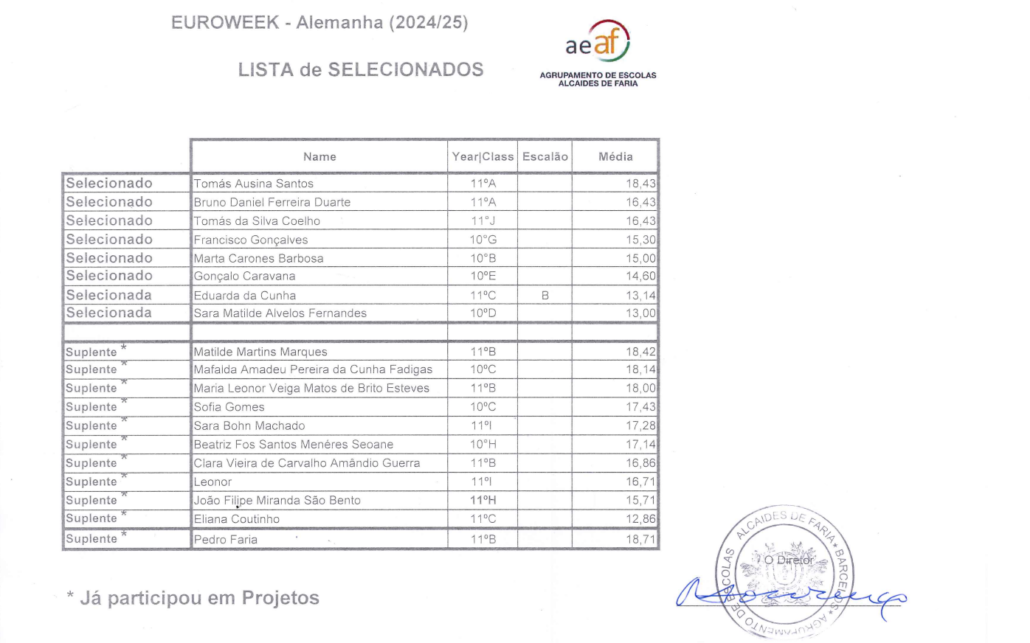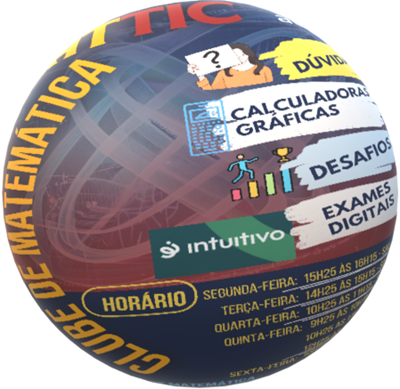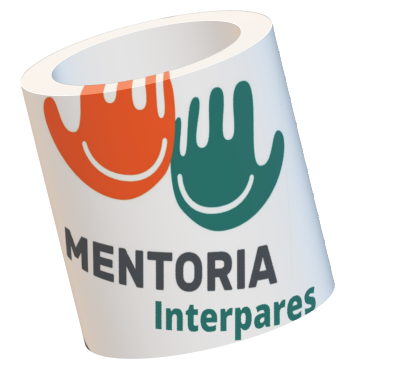Automation in Banking Hexanika Think Beyond Data
Banking Processes that Benefit from Automation
Data science is a new field in the banking business that uses mathematical algorithms to find patterns and forecast trends. Without automation, banks would be forced to engage a large number of workers to perform tasks that might be performed more efficiently by a single automation procedure. Without a well-established automated system, banks would be forced to spend money on staffing and training on a regular basis. They’re heavily monitored and therefore, banks need to ensure all their processes are error-free. But with manual checks, it becomes increasingly difficult for banks to do so. In order to be successful in business, you must have insight, agility, strong customer relationships, and constant innovation.
These innovations elevate service delivery and drive down operational costs for banks. Fourth, a growing number of financial organizations are turning to artificial intelligence systems to improve customer service. To retain consumers, banks have traditionally concentrated on providing a positive customer experience. In recent years, however, many customers have reported dissatisfaction with encounters that did not meet their expectations. Banking automation includes artificial intelligence skills that can predict what will happen next based on previous actions and respond accordingly. The finance and banking industries rely on a variety of business processes ideal for automation.
At times, even the most careful worker will accidentally enter the erroneous number. Manual data entry has various negative effects, including lower output, lower quality data, and lower customer satisfaction. Without wasting workers’ time, the automated system may fill in blanks with previously entered data. There will be a greater need for RPA tools in an organization that relies heavily on automation.
A high volume of omnichannel customer data
The advent of automated banking automation processes promises well for developing the banking and other financial services sector. By streamlining and improving transactions, these technologies will free up workers to concentrate more on important projects. In the future, financial institutions that adopt these innovations will be in a solid position to compete. The goal of automation in banking is to improve operational efficiencies, reduce human error by automating tedious and repetitive tasks, lower costs, and enhance customer satisfaction.
RPA eliminates the need for manual handling of routine processes such as data entry, document verification, and transaction processing. This automation accelerates task completion, reduces processing times, and minimizes the risk of delays, leading to enhanced operational efficiency. These bots are developed through a blend of machine learning and artificial intelligence, a process that involves AI and ML development alongside software programming.
Your automation software should enable you to customize reminders and notifications for your employees. Timely reminders on deadlines and overdue will be automatically sent to your workforce. Customized notifications by the workflow software should be linked, and automatically to all common tasks.
This is due to open banking APIs that aggregate your account balances, transaction histories, and other financial data in a unified location. The elimination of routine, time-consuming chores that slow down processes and results are a significant benefit of automating operations. Tasks like examining loan applications manually are an example of such activities. The paperwork is submitted to the bank, where a loan officer then reviews the information before making a final decision regarding the grant of the loan. Human intervention in the credit evaluation process is desired to a certain extent.
In this working setup, the banking automation system and humans complement each other and work towards a common goal. This arrangement has proved to be more efficient and ideal in any organizational structure. This allows the low-value tasks, which can be time-consuming, to be easily removed from the jurisdiction of the employees. With the rise of numerous digital payment and finance companies that have made cash mobility just a click away, it has become a great challenge for traditional banking organizations to catch up to that advanced service. Most of the time banking experiences are hectic for the customers as well as the bankers.
Robotic Process Automation in banking app development leverages sophisticated algorithms and software robots to handle these tasks efficiently. In return, human employees can focus on more complex and strategic responsibilities. The UiPath Business Automation Platform empowers your workforce with unprecedented resilience—helping organizations thrive in dynamic economic, regulatory, and social automation in banking sector landscapes. The world’s top financial services firms are bullish on banking RPA and automation. Hexanika is a FinTech Big Data software company, which has developed an end to end solution for financial institutions to address data sourcing and reporting challenges for regulatory compliance. ProcessMaker is an easy to use Business Process Automation (BPA) and workflow software solution.
Client management
Nanonets online OCR & OCR API have many interesting use cases that could optimize your business performance, save costs and boost growth. Enhancing efficiency and reducing man’s work is the only thing our world is working on moving to. The workload for humans will be reduced and they can focus on the work more than where machines or technology haven’t reached yet. AVS “checks the billing address given by the card user against the cardholder’s billing address on record at the issuing bank” to identify unusual transactions and prevent fraud. Banking automation helps devise customized, reliable workflows to satisfy regulatory needs. Employees can also use audit trails to track various procedures and requests.
Thanks to online banking, you may use the Internet to handle your banking needs. Internet banking, commonly called web banking, is another name for online banking. Automation is the future, but it must be properly managed against where human aid or direction is needed. Explore how Kody Technolab is different from other software development companies.
Unlocking the Power of Automation: How Banks Can Drive Growth – The Financial Brand
Unlocking the Power of Automation: How Banks Can Drive Growth.
Posted: Thu, 18 Jan 2024 08:00:00 GMT [source]
Your choice of automation tool must offer you fraud-proof data security and control features. A workflow automation software that can offer you a platform to build customized workflows with zero codes involved. This feature enables even a non-tech employee to create a workflow without any difficulties. Automation lets you carry out KYC verifications with ease that otherwise captures a lot of time from your employees. Data has to be collected and updated regularly to customize your services accordingly.
The potential for significant financial savings is the driving force for the widespread curiosity about Banking Automation. By removing the possibility of human error and speeding up procedures, automation can greatly increase productivity. Automation, according to experts, can help businesses save up to 90 percent on operating expenses. It takes about 35 to 40 days for a bank or finance institution to close a loan with traditional methods. Carrying out collecting, formatting, and verifying the documents, background verification, and manually performing KYC checks require significant time.
Address resource constraints by letting automation handle time-demanding operations, connect fragmented tech, and reduce friction across the trade lifecycle. Discover smarter self-service customer journeys, and equip contact center agents with data that dramatically lowers average handling times. The financial industry has seen a sort of technological renaissance in the past couple of years. But this has also lead to a complex scenario where the problem has to be addressed from a global perspective; otherwise there arises the risk of running into an operational and technological chaos. Business process management (BPM) is best defined as a business activity characterized by methodologies and a well-defined procedure.
RPA adoption often calls for enterprise-wide standardization efforts across targeted processes. A positive side benefit of RPA implementation is that processes will be documented. Bots perform tasks as a string of particular steps, leaving an audit trail, which can be used to granularly analyze what the process is about. This RPA-induced documentation and data collection leads to standardization, which is the fundamental prerequisite for going fully digital. Regardless of the promised benefits and advantages new technology can bring to the table, resistance to change remains one of the most common hurdles that companies face. Employees get accustomed to their way of doing daily tasks and often have a hard time recognizing that a new approach is more effective.
Manual Data Collection Process
DATAFOREST leads this charge, providing a suite of banking automation solutions that cater to the evolving demands of today’s financial landscape. To begin, banks should consider hiring a compliance partner to assist them in complying with federal and state regulations. Compliance is a complicated problem, especially in the banking industry, where laws change regularly. For several years, financial services groups have been lobbying for the government to enact consumer protection regulations.
According to the same report, 64% of CFOs from BFSI companies believe autonomous finance will become a reality within the next six years. About 80% of finance leaders have adopted or plan to adopt the RPA into their operations. Discover how leaders from Wells Fargo, TD Bank, JP Morgan, and Arvest transformed their organizations with automation and AI.
The banking industry has particularly embraced low-code and no-code technologies such as Robotic Process Automation (RPA) and document AI (Artificial Intelligence). These technologies require little investment, are adopted with minimal disruption, require no human intervention once deployed, and are beneficial throughout the organization Chat PG from the C-suite to customer service. And with technology fundamentally changing the financial and consumer ecosystems, there has never been a better time to take the next step in digital acceleration. Banks now actively turn to robotic process automation experts to streamline operations, stay afloat, and outpace rivals.
This expertise enables the creation of customized solutions that precisely meet each client’s unique needs and goals in the banking world. Our solutions enhance service quality and operational agility in retail banking, where customer engagement and efficiency are paramount. Features like automated account opening and user-friendly digital payment systems revolutionize the customer banking experience.
With the lack of resources, it becomes challenging for banks to respond to their customers on time. Consequently, not being able to meet your customer queries on time can negatively impact your bank’s reputation. With RPA and automation, faster trade processing – paired with higher bookings accuracy – allows analysts to devote more attention to clients and markets. With UiPath, SMTB built over 500 workflow automations to streamline operations across the enterprise. Learn how SMTB is bringing a new perspective and approach to operations with automation at the center.
- Banks have thousands of repetitive processes for potential RPA automation, and relying on intuition rather than objective analysis to select use cases can be detrimental.
- Enabling banking automation can free up resources, allowing your bank to better serve its clients.
- Automation, according to experts, can help businesses save up to 90 percent on operating expenses.
- The banking industry is one of the most dynamic industries in the world, with constantly evolving technologies and changing consumer demands.
- Even if the business decided to outsource, it would still be more expensive than using robotic process automation.
Chatbots and other intelligent communications are also gaining in popularity. Itransition helps financial institutions drive business growth with a wide range of banking software solutions. Cflow is one such dynamic platform that offers you the above features and more. As a no-code workflow automation software, employees and customers enjoy a smooth and fruitful banking experience. Choose an automation software that easily integrates with all of the third-party applications, systems, and data. In the industry, the banking systems are built from multiple back-end systems that work together to bring out desired results.
This promises visibility, and you can perform the most accurate assessment and reporting. Automation creates an environment where you can place customers as your top priority. Without any human intervention, the data is processed effortlessly by not risking any mishandling. The ultimate aim of any banking organization is to build a trustable relationship with the customers by providing them with service diligently. Customers tend to demand the processes be done profoundly and as quickly as possible.
With AI, robots can “learn” and make decisions based on scenarios they’ve encountered and evaluated in the past. In customer service, for example, virtual assistants can lower expenses while empowering both customers and human agents, resulting in a better customer experience. To get the most from your banking automation, start with a detailed plan, adopt simple-but-adequate user-friendly technology, and take the time to assess the results. In the right hands, automation technology can be the most affordable but beneficial investment you ever make. Digital transformation and banking automation have been vital to improving the customer experience. Some of the most significant advantages have come from automating customer onboarding, opening accounts, and transfers, to name a few.
Hence, automation software must seamlessly integrate with multiple other networks. The successful banks of the future will welcome innovations, are adaptable to new business models, and always puts their customers first. Despite the advantages, banking automation can be a difficult task for even IT professionals. Banks can automate their processes with the use of technology to boost productivity without complicating procedures that require compliance. Know your customer processes are rule-based and occupy a lot of FTE’s time.
The effects withinside the removal of an error-prone, time-consuming, guide facts access procedure and a pointy discount in TAT while, at the identical time, retaining entire operational accuracy and mitigated costs. A wonderful instance of that is worldwide banks’ use of robots in their account commencing procedure to extract data from entering bureaucracy and ultimately feed it into distinct host applications. You can foun additiona information about ai customer service and artificial intelligence and NLP. For the best chance of success, start your technological transition in areas less adverse to change. Employees in that area should be eager for the change, or at least open-minded. It also helps avoid customer-facing processes until you’ve thoroughly tested the technology and decided to roll it out or expand its use. Learn how top performers achieve 8.5x ROI on their automation programs and how industry leaders are transforming their businesses to overcome global challenges and thrive with intelligent automation.
Automation can gather, aggregate, and analyze data from multiple sources to identify trends enabling employees throughout the business to make more informed business decisions with deeper business intelligence insights. This may include developing personalized targeting of products or services to individual customers who would benefit most in building better relationships while driving revenue and increasing market share. Digital workers execute processes exactly as programmed, based on a predefined set of rules. This helps financial institutions maintain compliance and adhere to structured internal governance controls, and comply with regulatory policies and procedures. Compared to a manual setup, the repetitive processes are removed from the workflows, providing less scope for extra expenses.
With banking automation, tasks that once demanded intensive manual work are now streamlined through sophisticated software and technology. The Bank of America wanted to enhance customer experience and efficiency without sacrificing quality and security. However, AI-powered robotic process automation emerged as the best solution to overcome these challenges. Today, many of these same organizations have leveraged their newfound abilities to offer financial literacy, economic education, and fiscal well-being. These new banking processes often include budgeting applications that assist the public with savings, investment software, and retirement information. When banks, credit unions, and other financial institutions use automation to enhance core business processes, it’s referred to as banking automation.
Many professionals have already incorporated RPA and other automation to reduce the workload and increase accuracy. However, banking automation can extend well beyond these processes, improving compliance, security, and relationships with customers and employees throughout the organization. An average bank employee performs multiple repetitive and tedious back-office tasks that require maximum concentration with no room for mistakes. RPA is poised to take the robot out of the human, freeing the latter to perform more creative tasks that require emotional intelligence and cognitive input. According to Gartner, process improvement and automation play a key role in changing the business model in the banking and financial services industry. Banking automation significantly elevates efficiency in large enterprises by streamlining financial transactions, automating routine operations, and minimizing manual errors.
Banks can quickly and effectively assist consumers with difficult situations by employing automated experts. Banking automation can improve client satisfaction beyond speed and efficiency. To maintain profits and prosperity, the banking industry must overcome unprecedented levels of competition.
Potential for collaboration between traditional banks and fintech companies
To survive in the current market, financial institutions must adopt lean and flexible operational methods to maximize efficiency while reducing costs. Selecting a banking automation solution requires careful consideration of system compatibility, scalability, user-friendliness, security measures, and compliance capabilities. It’s also important to assess the vendor’s reputation, customer support, and the software’s ability to adapt to future technological and regulatory shifts.
Financial institutions should make well-informed decisions when deploying RPA because it is not a complete solution. Some of the most popular applications are using chatbots to respond to simple and common inquiries or automatically extract information from digital documents. However, the possibilities are endless, especially as the technology continues to mature. A lot of the tasks that RPA performs are done across different applications, which makes it a good compliment to workflow software because that kind of functionality can be integrated into processes. Banks used to manually construct and manage their accounting and loan transaction processing before computerized systems and the internet. Banking automation now allows for a more efficient process for processing loans, completing banking duties like internet access, and handling inter-bank transactions.
For example, leading disruptor Apple — which recently made its first foray into the financial services industry with the launch of the Apple Card — capitalizes on the innovative design on its devices. It speeds up transactional workflows and harmonizes various banking operations, fostering a new era of productivity and optimization. Banking automation has become one of the most accessible and affordable ways to simplify backend processes such as document processing. These automation solutions streamline time-consuming tasks and integrate with downstream IT systems to maximize operational efficiency. Additionally, banking automation provides financial institutions with more control and a more thorough, comprehensive analysis of their data to identify new opportunities for efficiency. These solutions are embedded with agility, digitization, and innovation, ensuring they meet current banking needs while adapting to future industry shifts.
For example, AI, natural language processing (NLP), and machine learning have become increasingly popular in the banking and financial industries. In the future, these technologies may offer customers more personalized service without the need for a human. Banks, lenders, and other financial institutions may collaborate with different industries to expand the scope of their products and services.
The greatest advantage of automation technologies is the fact that they do not necessitate any additional infrastructure or setup. Most of these can be included in the system with little to no modification to preexisting code. In addition, they can be tailored to work with as many existing systems as feasible and provide value across the board.
This paves the way for RPA software to manage complex operations, comprehend human language, identify emotions, and adjust to new information in real-time. Process standardization and organization misalignment are banking automation’s biggest banking issues. IT and business departments’ conventional split into various activities causes the problem. To align teams and integrate banking automation solutions, an organization must reorganize roles and responsibilities.
Establishing high-performing operational teams led by capable individuals and constructing lean, industrialized processes out of modular, universal components can bring out the best. Automation helps banks streamline treasury operations by increasing productivity for front office traders, enabling better risk management, and improving customer experience. By bringing everything together and connecting loose ends, automation enables the banking sector to deliver the cost-saving that it needs, while simultaneously delivering value to customers. Since the Industrial Revolution, automation has had a significant impact on economic productivity around the world. In the current Fourth Industrial Revolution, automation is improving the bottom line for companies by increasing employee productivity. The repetitive tasks that once dominated the workforce are now being replaced with more intellectually demanding tasks.
SS&C Blue Prism enables business leaders of the future to navigate around the roadblocks of ongoing digital transformation in order to truly reshape and evolve how work gets done – for the better. Using IA allows your employees to work in collaboration with their digital coworkers for better overall digital experiences and improved employee satisfaction. They have fewer mundane tasks, allowing them to refocus their efforts on more interesting, value-adding work at every level and department. An approval screening is performed where it identifies any false positives. Automation can reduce the involvement of humans in finance and discount requests. It can eradicate repetitive tasks and clear working space for both the workforce and also the supply chain.
Banks can do fraud checks, and quality checks, and aid in risk reporting with the aid of banking automation. Analyzing client behavior and preferences using modern technology can help. This is how companies offer the best wealth management and investment advisory services.
With multiple documents to check, scan, and validate, KYC is an error-prone and manual process for most of banks. Every bank and credit union has its very own branded mobile application; however, just because a company has a mobile banking philosophy doesn’t imply it’s being used to its full potential. To keep clients delighted, a bank’s mobile experience must be quick, easy to use, fully featured, secure, and routinely updated. https://chat.openai.com/ Some institutions have even begun to reinvent what open banking may be by adding mobile payment capability that allows clients to use their cellphones as highly secured wallets and send the money to relatives and friends quickly. E2EE can be used by banks and credit unions to protect mobile transactions and other online payments, allowing money to be transferred securely from one account to another or from a customer to a store.






























